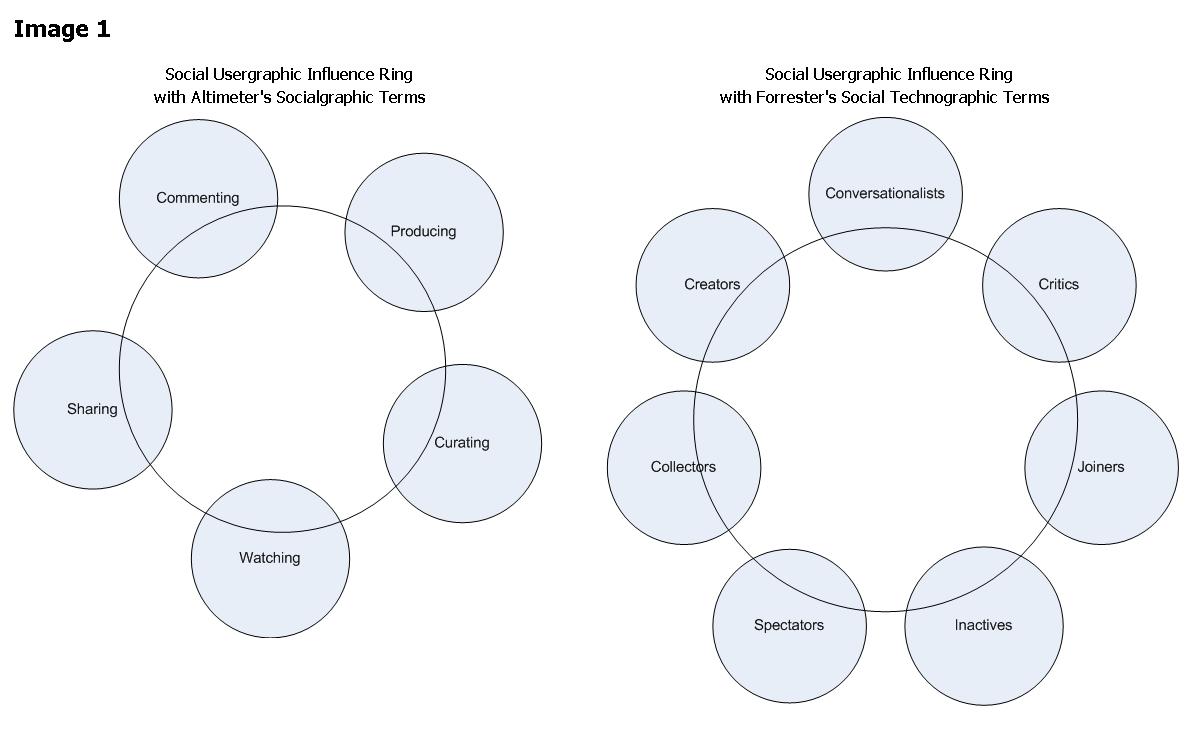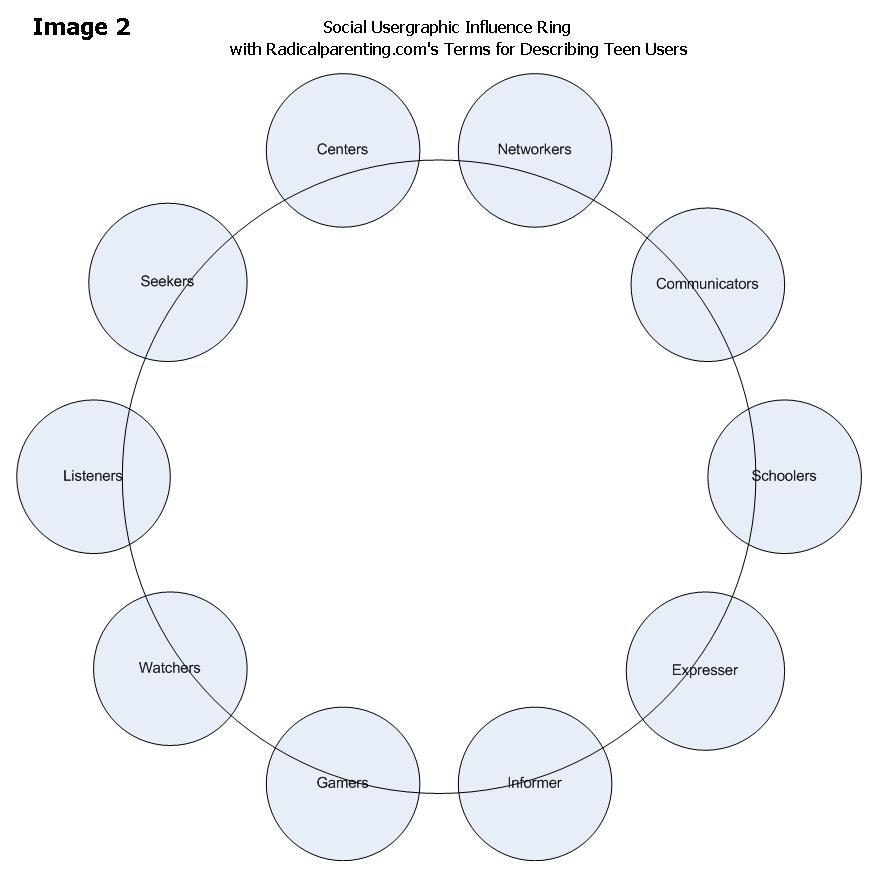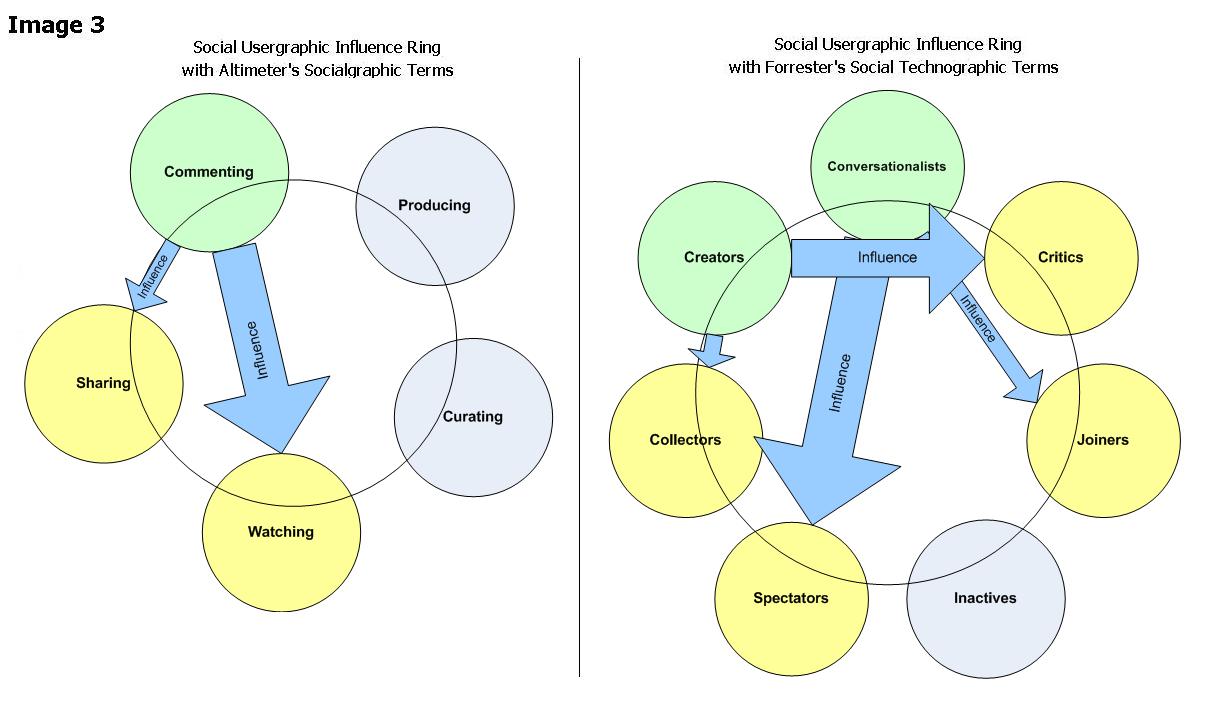Before I get into the details of the Social Usergraphic Influence Ring, I’ll explain where the name came from.
Even the dictionary has adopted the term ‘user’ to define a person who uses a computer. The term has become so mainstream that it is being used increasingly in pop culture (See Tron, a movie where the user becomes part of the game). Thus, it is only fitting to incorporate this term into the model’s title seeing as it is more descriptive of the group than the word Techno or Technology.
The term influence is included to provide context to the users of the model. It is more valuable to understand both the engaged user groups and their influence amongst all user groups than it is to simply understand engagement. As mentioned in a previous post, without fully understanding the user group relationships marketers could misdirect their resources.
The descriptive term ‘Ring’ is used for a couple of reasons. First, it signifies a bond or unity amongst individuals. Seeing as all user groups are part of a greater unified online community, the analogy fits well. Second, a ring does not visually represent any hierarchy; any point around the circumference is equal to other points.
Without further delay, below in Image 1 there is a visual representation of the Social Usergrahic Influence Ring leveraging Altimeter’s Socialgraphic Terms and Forrester’s Social Technographic Terms as user group descriptors.
Remember that my criticism of the Ladder and Pyramid was not directed at the terms used to describe the user groups. I am merely suggesting an alternate model that overcomes the three main flaws described in the previous post; (the hierarchy, the static view of an ever-evolving culture and the lacking concept of influence)
Hierarchy — Just like the table in the story of King Arthur and his Knights, the round shape signifies equality. No single group is more important that another. It is critical to avoid a hierarchical approach seeing as hierarchy can mislead marketing efforts; seeing as one could interpret that the higher a user group sits on the hierarchy, more marketing efforts should be spent.
Static View — As demonstrated above in Image 1, this model is flexible for growth. If additional user groups emerge, the model expands and another circle is added to the perimeter. It is not necessary to evaluate the importance of the group and determine their hierarchical rank. For example Image 2 below shows how the model would expand if Radicalparenting.com’s ten categories for describing teen users became the new user group descriptors.
Influence — Finally, most important for marketers is the ability to undestand how one user group influences others. Neither the Ladder nor the Pyramid facilitate this activity. The Ring model is more conducive to showing the relationships between the groups. Below, in Image 3, you can see how the model can be used to show the influencial relationships between user groups.
On the left side of Image 3 (using the Socialgraphics terms), the image suggests that the most prevalent users are those that are commenting (represented by the green circle). The arrows suggest that commenting has an influence on users that are watching and sharing (represented by the yellow circles). A larger arrow indicates a more prevalent influence.
On the right side of Image 3 (using the Social Technographic terms), the image suggests that there are multiple prevalent user groups. Also, each prevalent user group is shown to have influence over multiple user groups but with varying intensity.
I did not set out to contest the terms that describe the user groups. Both Forrester and Atimeter have done that work effectively. However, I did set out to evaluate the models from a functionality perspective. Overall, because it addresses the three main flaws discussed, the Social Usergraphic Influence Ring is a superior marketing tool for segmentation, targeting and positioning activities.



